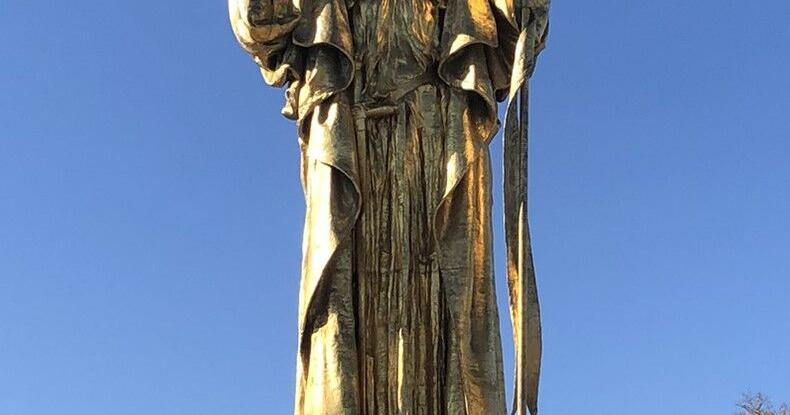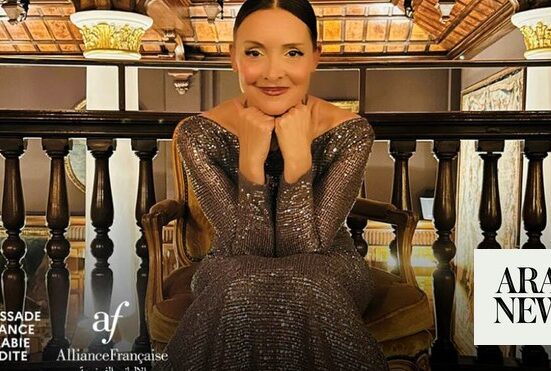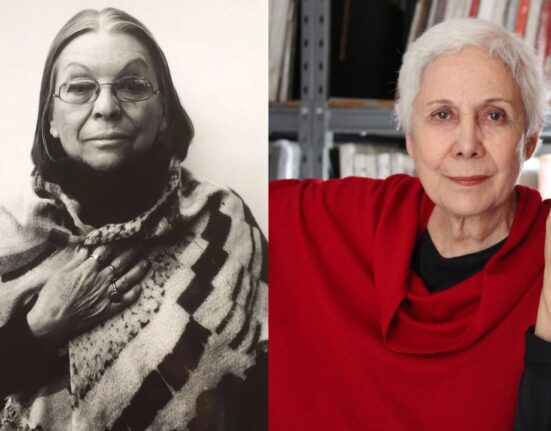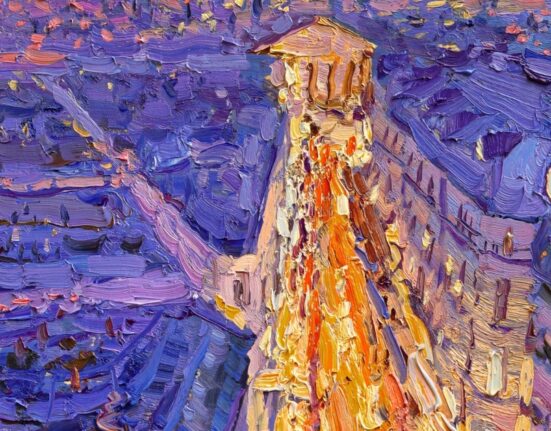Jackson Park’s Golden Lady, a glistening replica of France’s 1893 Statue of the Republic, has for the past year towered over extensive construction in and around the park. As changes continue in Jackson Park, the Golden Lady stands as a memorial to the World’s Columbian Exposition.
World’s fairs were once common, a combination of national puffery, trade show and educational entertainment, often marking an anniversary. When the United States didn’t get respect at the 1889 Paris fair, they wanted redemption. The upcoming 400th anniversary of Christopher Columbus bumping into the Americas seemed like a theme that would attract Europe’s colonial powers plus the independent nations in the Caribbean and South America. If they were coming, everyone worldwide looking for new markets would come.
Authorization had to come from Congress before the president could invite other nations, but it took months before Congress settled on Chicago. Then Chicago dithered. It was November 1890 before they listened to Frederick Law Olmsted and chose Jackson Park. One thing Congress agreed on early was that the centerpiece of the fair would be the Court of Honor, a Beaux Arts extravaganza designed by the best architects that would show the world that America had class.
It was quickly obvious that fair organizers couldn’t build the infrastructure and more than 200 buildings, including 14 of the largest structures ever made, in time for the actual anniversary of Columbus’ 1492 voyage, so, somewhat embarrassingly, the fair became the Columbian Exposition of 1893. Even that deadline worried the organizers. They handed the assignment of creating a guardian spirit for the Court of Honor to Daniel Chester French, with a warning: It absolutely, positively, had to be ready for the opening ceremonies on May 1, 1893.
A portrait of Edith Minturn Stokes and her husband Isaac by John Singer Sargent.
French mulled it over and finally hit on the epitome of classicism, the Athena Parthenos, as a model. Edith Minturn, a New York socialite, posed for him in flowing robes, holding a stuffed bird in one hand and a broomstick in the other, so he could sketch out his ideas. Few ever knew that the statue had a model, but Minturn is famous in the art world nonetheless. In 1897, John Singer Sargent painted her as the epitome of the modern woman. Not unlike the fair, she could be both classical and contemporary.
French arrived in Chicago in the spring of 1892 with a three-foot clay “sketch” in his trunk. After he polished a 12-foot model, his assistants sawed it into three sections to make the final version, which would be five times larger. They marked the model with reference nails and drove corresponding nails into the timber-frame skeleton of the final version until long nails stuck out like porcupine quills. Working in the cavernous interior of the Forestry building, which could hold the massive sections, his team slathered on the staff, which was a mix of plaster of Paris and hemp fibers. The staff could be shaped, carved, nailed and set in molds.
The finished sections were hauled to the Grand Basin and hoisted onto the 40-foot pedestal. An iron framework bolted the sections in place, while scaffolding and a wooden box encased the outside so workmen could apply 160,000 sheets of gold leaf in the late winter.
French wanted her skin to be ivory colored like his inspiration, the Athena Parthenos. Official guides, some photos and French’s biographer, Harold Holzer in his 2019 book “Monument Man,” say she had ivory skin. However, Julian Hawthorne, novelist Nathaniel Hawthorne’s son, lamented that her skin was gold, and some photos seem to agree with him. It’s a bit of a mystery.
On April 18 of 1893, eight men were still inside the wooden box gilding the Republic. Just days before opening, workmen frantically tore down the immense wooden box and scaffolding, tossing lumber five stories down into the basin.
On May 1, when President Grover Cleveland pressed the button to start the fair, a man on the Republic’s head released the drape, revealing her sparkling glory. Fountains sprang to life, flags unfurled and a gunship fired its cannon. Reporters tactfully didn’t mention that some leftover scaffolding was casting shadows on the Republic.
A watercolor painting depicting the Court of Honor at the World’s Columbian Exposition, showing the 100-foot tall statue in with her Beaux Arts surroundings.
Serenely classical, she suited the Court of Honor. As tall as she was, she was dwarfed by the buildings. Her sisters at the fair, statues representing France and Germany, waved unsheathed swords. The Republic offered peace, though there is a sword hidden in her robes. In her right hand she held up the globe, an invitation to the world under the protection of the eagle. In her left hand, she held a Phrygian cap on a staff.
The cap was confusing. If people recognized it at all, some thought it was related to the French Revolution of almost a century prior. But it had been part of American iconography earlier than that. Because the cap was commonly associated with liberated Roman slaves, American abolitionist art used it throughout the mid-century. French had known his neighbors, abolitionists Bronson Alcott and Ralph Waldo Emerson, as a young man and had created their portrait busts. He was sending a message: The Republic was ready to defend liberty.
Critics also didn’t get the reference to Athena Parthenos. They complained that the Republic was too symmetrical, too austere, too abstract. Her defenders, like sculptor Lorado Taft, explained that she was meant to express the classicism of the Court of Honor and embody American ideals. Though critics complained, visitors treated “Big Mary” with affection.
Every night, a worker climbed 100 feet inside the statue to light her crown. Visitors who had never seen a light bulb were dazzled by the Court of Honor at night. The fair used three times the amount of electricity as the whole rest of Chicago. In addition, fireworks went off three nights a week. They were especially fine for Bunker Hill Day. In addition to the rockets in the air, 1,000 golden jets sprang out of the water surrounding the Republic, while fireworks shaped like fish seemed to dive in and out. It was, everyone agreed, like a dream.
View of the Court of Honor at night with its unprecedented display of electricity, 1893.
The dream ended quietly on October 30. It was quiet because the city’s mayor had been murdered two days prior. It was October 30 because a clerk in Congress forgot that October had 31 days. The rude awakening came November 1, when control switched to the South Parks Commission, thousands of exhibitors started packing and looters searched for souvenirs.
Daniel Burnham, the fair’s manager, once joked that a fitting end for the fair would be to burn it down. He got his wish. In January 1894, fire took out the peristyle and the buildings surrounding the statue. Watchmen were few, the alarm boxes were disconnected and the standpipes, which could have pumped water to the roofs, were gone. The number of firetrucks on call had been cut in half. The disaster was almost inevitable. The Republic escaped relatively unharmed. One of the firemen, however, died.
More fires struck that winter, while the salvage company stripped the park of anything of value. By summer, the Republic presided over a flattened wasteland. Those who had debated during the fair whether she was beautiful now agreed that she was majestic. She had become the embodiment of memory.
The Statue of the Republic after the Peristyle fire, January 1894.
The South Parks Commission wasn’t interested in the public’s memory. In November 1894, they removed her gilding. Her right arm, weakened from the fire, fell off. To avoid a public outcry over her destruction, the commission snuck out at dawn on August 27, 1896, to burn her to the ground. Her wood and jute interior went up in flames with the roar of a tornado.
Her memory didn’t go away. In 1896, The Art Institute ordered a 12-foot replica in plaster. That year, a replica with a gilded bronze body and marble skin went to Siegel and Cooper, a Chicago department store that wanted to use her to brand their new store in Manhattan. Another copy ended up in Forest Lawn Cemetery in Los Angeles.
The gilded bronze and marble replica of 1896, currently standing in Forest Lawn Cemetery.
The Phrygian cap was gone. In its place, the Republic carried a standard like the ones carried by the Roman Legion. It spelled out Liberty, clarifying French’s message. The plaster copy ended up in Garfield Park for a time. In 1916, a Tribune reporter spotted it in a corner of the Wentworth armory, still holding “its historic fish ball.”
In 1915, the exposition donated the last $47,000 of undistributed dividends to the Ferguson Fund, which agreed to cover additional costs for a memorial to the fair. The fund wanted to recreate the Republic, deciding to dedicate her in 1918 for the 25th anniversary of the fair and the 100th anniversary of the founding of Illinois. After a parade and speeches, the granddaughters of the fair’s president unveiled her.
There were more changes. She faces east, not west, and she’s a third of the original size. And instead of the peristyle wrapped around her, she stands alone between a highway and a golf course, the approximate location of the Administration building in 1893.
After 1918, the statue had a career in advertising, appearing in ads for the National Republic Bank of Chicago, American Family Soap Flakes and Maurice L. Rothschild suits. But, as memory of the fair faded, she suffered neglect. The Tribune speculated that she’d become the “Golden Widow” or even “Dirty Mary,” covered in soot with disintegrating gold leaf. Scores of people carved their names on her feet and the hem of her gown.
In 1993, the city finally remembered her on the 100th anniversary of the fair and gave her a new layer of gold leaf. In 2003, she became a city landmark, and Eric Larson’s best-seller, “Devil in the White City,” reintroduced the world to the fair. She once more had visitors.
Then, in 2021, three statues of Columbus around the city, which trace back to the fair, were taken down. The city’s Monuments Commission raised the question of what monuments do. Of course, Columbus, who was a horrific criminal even in the eyes of his own time, clearly celebrated European colonialism, a point made during the fair by Simon Pokagon of the Potawatomi. In the end, the commission said the Republic could stay but needed more context. I think what they saw was that the Republic stands for the whole fair, which expressed the prejudices of its age, but which also transformed the South Side of Chicago, introduced the world to the 20th century, gave voice to many, including recent immigrants and Frederick Douglass, and bent the arc of history in a thousand ways. We need the memory of yesterday to understand where we are today.
If you see something around Hyde Park that makes you ask, “What’s that about?”, let me know at hydeparkquestions@gmail.com. I might be able to find the story.







